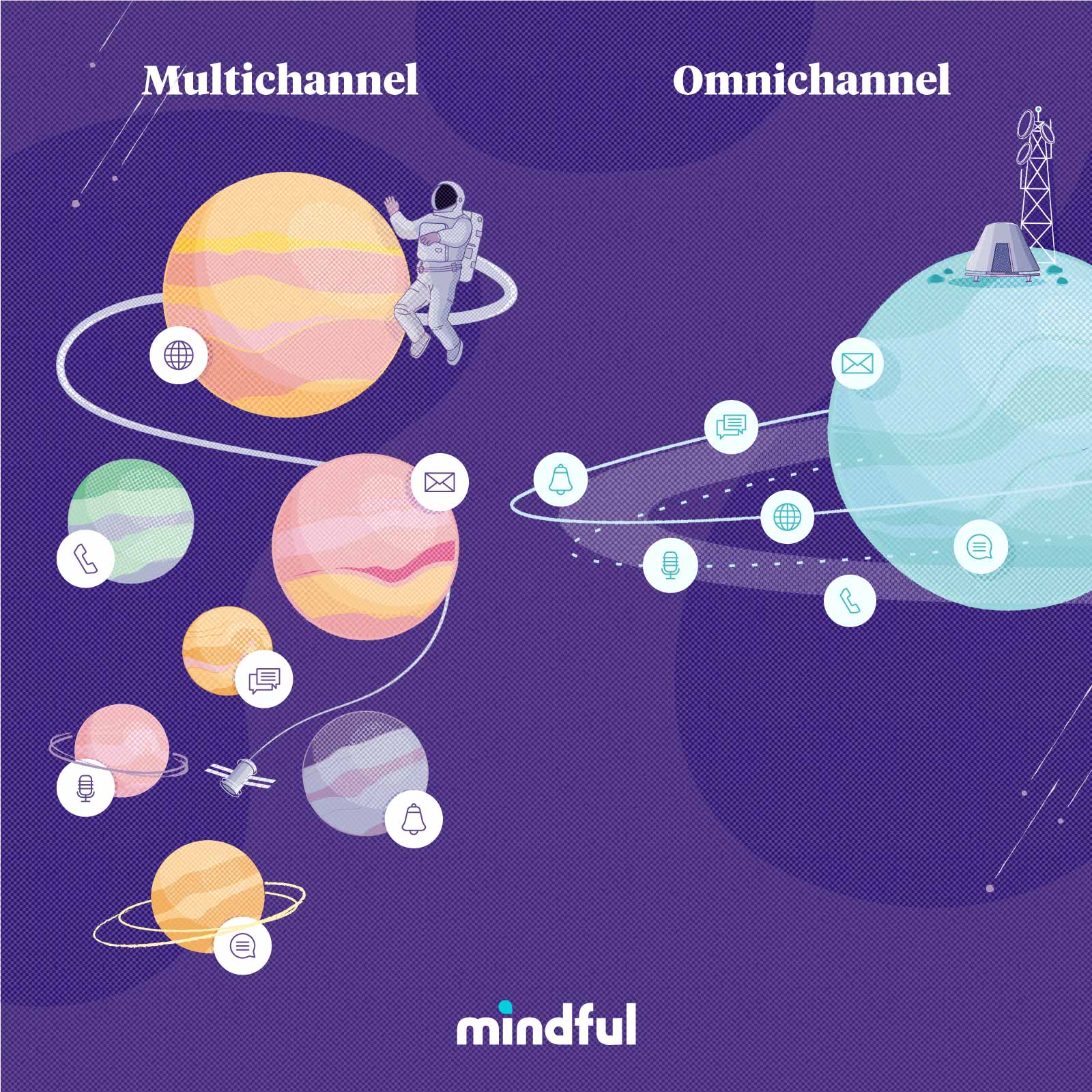Many companies might think they have great CX or know their customer’s journey: 81% of companies view customer experience as the differentiator among competitors, beating out price. The CEM (customer experience management) market—worth $7.6 billion in 2020—expects a 17.5% CAGR (compound annual growth rate) from 2021 to 2028. That’s a considerable investment in the burgeoning customer experience marketplace.
But some customers may disagree. According to one study, 54% of customer believe that most companies need to improve their customer experience strategy.
Yet as reluctant as some companies have been to overhaul operations and create a better digital experience for their customers, it’s catching up to them: 55% of businesses believe they have less than 12 months before their bottom line takes a hit.
Creating a positive, healthy digital experience that efficiently serves customer expectations isn’t as daunting as it sounds. Despite perceptions, there’s no overhaul required! At least, not if you can follow these easy first-step initiatives.
And remember, customer-first should always be your mantra.
Step 1: Establish or enhance omnichannel support.
Omnichannel support is an approach to customer support wherein all channels—email, phone, chat, text, and social media—are integrated into one support system for improved customer communications.
Don’t confuse omnichannel support with multichannel support. Having an email department, a live chat department, and a phone center working on customer service is multichannel support. Omnichannel is all departments working together, with background data that follows the customer through their journey with you. A customer can find a brand in any channel, and transition seamlessly between channels—without having to repeat their information at each juncture.
Statistics show that 66% of customers use three or more channels to communicate with a company. In addition, over 70% of customers believe it is the company’s responsibility to prevent them from repeating information to different CX (customer experience) agents.
Omnichannel includes a wide range of digital customer experience touchpoints.
- Email: Use it to reach a customer immediately and personalize it so that customers feel appreciated.
- Chat: Automate your customer support with chat when call volume becomes an issue. It’s cheaper than live agents but less personal as well.
- Phone: It’s still the go-to for customer support, with over 50% of customers across all age groups using it for support. To use it effectively, make sure your call agents are well trained and have various metrics at their fingertips to analyze and fully understand the customer journey.
- Text: Moving up the list of preferred channels, texting is far more immediate than emails or phones. Use it to transition customers between digital and voice, or when you want quick survey answers or to make customers feel they’re heard and ultimately appreciated.
- Social media: This component of digital customer experience is fast becoming the most important, due to the fact that negative reactions spread like wildfire on social media (36% of consumers share their customer service experience, whether good or bad, with more than a third posting on Facebook). When employing this in an omnichannel approach to support, consider establishing a social media contact who handles issues brought to your social media pages quickly and professionally (79% of customers are looking for a response within 24 hours!).
- Mobile apps: Your development team should also regularly review mobile apps for optimization. A poorly functioning mobile app will lead to customer frustration.
Bottom line: It’s not enough to be available in these channels. Your strategy and tech needs to include transitions and context carryover to have a true omnichannel approach and enhanced digital customer expreience.
Step 2: Make the customer experience convenient and simple.
The minute a customer can’t find what they need, they leave to find the information elsewhere. With customer service, this might mean they ditch the digital channel and move to voice (which, by the way, should be smooth). But if the digital experience is poor and the customer wants to buy something (even if they’re looking for support), this could mean losing the sale to a competitor.
The easier the customer’s experience is when navigating through your digital experience, the better you’ve served their needs. It’s important, too, since 90% of customers use customer experience as THE factor when deciding to do business with a brand or company.
Using your CES (customer effort scores) data to determine where the pain points are for the customer is a great start when improving your CX. Still, you should also regularly review the user flow of your website internally. Then, to further strengthen your CX, take a tour of the experience to resolve an issue or to find an answer, creating a customer journey map either by yourself or using a pre-made template.
Finally, put yourself in the customer’s shoes. If you have any problems navigating through your company’s process, chances are the customer is having the same problem and may give up if it’s too much effort.
Step 3: Create a consistent presence across all channels.
A consistent presence across your channels instills confidence, customer loyalty, and a sense of security for your customers. The one thing a customer doesn’t want is a high level of confusion during their journey. No one wants to experience a good customer service chat session followed by a terrible self-support web portal. In fact, 76% of customers demand consistency in their customer service experience, while 54% don’t believe those different departments share customer information.
One way to create a consistent presence across channels is to make sure that all departments in various channels meet regularly to go over some of the challenges and obstacles they face when dealing with customers. Chat and phone teams may have a completely different set of customer issues than email and social media teams do. Having a cadenced CX council to discuss the customer experience ensures that all teams are working on the same page and toward the same goal: better customer satisfaction. You can also enhance your CX teams by establishing actionable OKRs (objectives and key results) or training with specialized services.
Step 4: Don’t ignore customer data.
A frustrating aspect of the customer experience for teams working on CX strategy is knowing what your customer is thinking or predicting how they will act in the future. It’s hard to plan a trip without a roadmap, and that roadmap is the metrics from customer feedback and surveys. But, in reality, 67% of senior managers or higher say they don’r use or are “uncomfortable” using the data supplied.
Companies are getting on board with data-driven customer satisfaction. Of companies that deliver top-notch, positive customer experiences, 70% use feedback. Meanwhile, of company with average experiences, only 50% utilize customer feedback, and, for those that have poor experiences, only 29% utilize this data.
Take Netflix, for example. In 2011, Netflix conducted focus groups to ask subscribers what they thought of Netflix’s plan to split its DVD rental and streaming platforms. They received over 11,000 negative responses on their CEO’s blog post about the change, but decided to go ahead with their decision anyway. Unfortunately, it resulted in a three-tiered downward spiral. First, the subscription prices for existing loyal customers increased by 60%, they subsequently lost 800,000 subscribers, and their stock prices plummeted—and the following year, they were listed as one of the Ten Most Hated Companies in America. Ouch. WhileNetflix managed to bounce back from that mistake a decade ago, they could have enjoyed even greater financial success in those same years had they listened to customer feedback and found another way to accommodate their audience.
Step 5: Establish and maintain self-service support.
In the past, having a self-help portal on your website was a nice additional perk for most companies. But now, 90% of customers expect companies to have a self-service support option, and 74% used self-service to solve their issues. If you don’t have a self-service customer portal, you risk customers—who don’t want to call, email, or text you—leaving you for a competitor.
Customer retention may depend on providing customers with a reliable and efficient way for them to contact you.
To improve your customer relationships, consider adding a self-support option. If you already have a self-service portal, make sure it’s easy to navigate and addresses a wide variety of issues, and pair it with an option to speak to a live agent.
In addition, your teams should regularly maintain detailed FAQ pages, community forums, and knowledge bases to ensure that all questions are answered quickly and intelligently with timely relevant information. Remember, your customers aren’t the only ones using FAQs, knowledge bases, and forum chatter — your CX teams and call centers also reference these pages, so well-rounded and detailed self-help pages benefit your whole company.
Step 6: Use the Mindful platform to help build your digital experience.
The adage “the customer is always right, even when they’re wrong” is not only the ideology of customer service, but for companies switching to customer-first frameworks, it’s the basis of all touchpoints in the customer’s experience. So it may help to have some guidance in this area, and this is where Mindful comes in.
Its digital call scheduling and messaging capabilities will help customers control their experiences, transition across channels with ease, and will even aid your contact center in reducing volume and bottlenecking at the same time.
No one likes to be placed on hold, and in trying to satisfy customers, Mindful creates spaces where the customer isn’t in limbo waiting for help. Instead, they’re allowed to get on with their lives and accomplish other tasks. In addition, Mindful will let them know when a customer service agent can address their problem—and it gives your customer the perceived freedom of not being held to a phone line while helping to reduce costs by freeing your agents for other calls.
Summing up: Building and growing a digital experience isn’t hard.
Improving your digital customer experience sounds like a monumental task, but in reality, you only need three things: empathy for your customer’s experience, a dedicated team (or teams) whose focus is to make your customer’s life easier, and a human touch in every one of your channels.
The steps listed in this article are a great start to help you improve your digital customer experience or even begin your digital transformation, but make sure you start with empathy, personalization, and an omnichannel approach.






